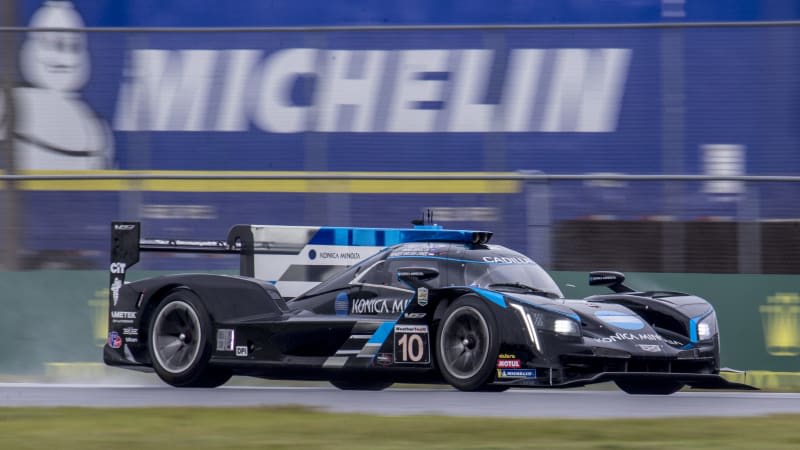Audi Repair Shop Doylestown
Call 267 279 9477 to schedule a appointment

Sportscar 365 reports that IMSA, which oversees the WeatherTech Championship in the U.S., and the ACO, which oversees the World Endurance Championship, sent draft rules for the coming LMDh category to motorsports stakeholders. LMDh — an unofficial temporary name standing for Le Mans Daytona hybrid — was announced in January and arose from IMSA and ACO talks to create a racing category enabling manufacturers to run the same car in North America’s and Europe’s biggest races. The new draft rules also include convergence language to permit the ACO’s so-called Le Mans Hypercar class (LMH) to run with LMDh cars by lowering Hypercar power and weight limits to those of LMDh.
This means a maximum output of 670.5 horsepower, down from 750 hp first set for the Hypercar class, and a minimum weight of 1,030 kilograms (2,271 pounds), down from 1,100 kg (2,425 pounds). With that established, LMDh and LMH cars would still need to run together in order to establish the beginning of a Balance of Performance formula.
The LMDh cars will run on next-gen, spec LMP2 chassis built by four companies, Dallara, Ligier, Multimatic, and Oreca. Automakers can fit their own engines, and style their own bodywork to a comprehensive set of aerodynamic regulations. It’s thought that the ultimate LMDh rules will be homologated for at least five years.
Hypercars are scheduled to begin racing next summer with the start of the 2021/2022 WEC season, while LMDh is programmed to begin with the first race of 2022 in the IMSA series, the Rolex 24 at Daytona.
IMSA President John Doonan said, “In order to get to this draft set of regulations, both sides, as well as constructors and other consultants, did a ton of simulation work to help us make sure that we could try to find a way to balance Hypercar and LMDh,” adding, “But it’s a long process to probably get there.”
Doonan clarified, however, that IMSA will only allow Hypercars from “mass production” OEMs. As head of an organization that counts 17 large car brands as partners, IMSA is finicky about upstarts. When asked about boutique car builders like Scuderia Cameron Glickenhaus which is working on its SCG 007 and ByKolles, both registered for Hypercar, Doonan would only say, “IMSA’s strategy is certainly focused on automotive manufacturers, and I think there are regulations in certain other categories about specific volumes of production that are required the FIA in some cases and things like that.” WEC regulations stipulate that competitors in Hypercar produce a minimum of 20 road cars based on their race cars within two years of the start of competition.
The matter affects Toyota as well. The Japanese OEM races under the Lexus brand in IMSA, but its Gazoo Racing performance arm has been developing an entry to campaign in Hypercar. The first Hypercar rules permitted a manufacturer-developed hybrid system on the front axle that could contribute up to 270 hp of the total allowed 750 hp, activated only above 80 miles per hour. LMDh is restricted to a spec hybrid system on the rear axle that adds 50 hp at most, and Toyota chose Hypercar over LMDh because of the hybrid issue. A Toyota spokesperson said, “We want the possibility to improve our road-relevant hybrid technology in WEC, and we welcome the chance to test our technology against even more manufacturers.”
The final rules are expected to be announced by this year’s 24 Hours of Le Mans, which has been rescheduled for September. A joint statement from IMSA and the ACO said in part, ”The introduction of LMDh race cars continues to be targeted in the 2022 racing season for both the ACO and IMSA,” the proviso being, “this timeline will clearly need to be further validated in partnership with the automotive manufacturers, chassis constructors and key suppliers in light of the COVID-19 pandemic to determine if a delayed introduction becomes necessary.”
from Autoblog https://ift.tt/2LfTALe
